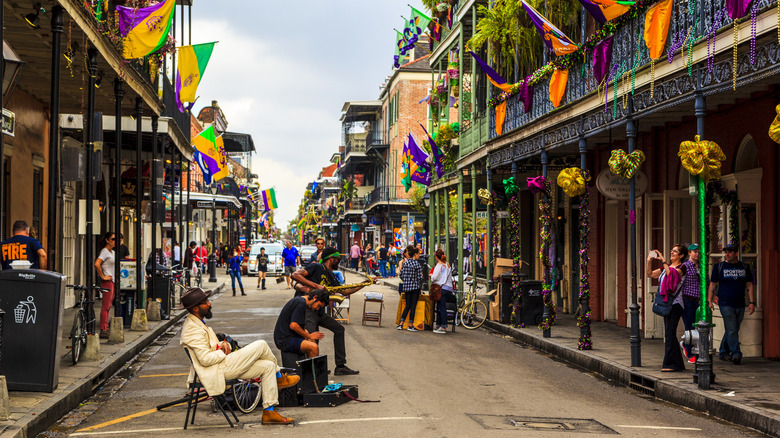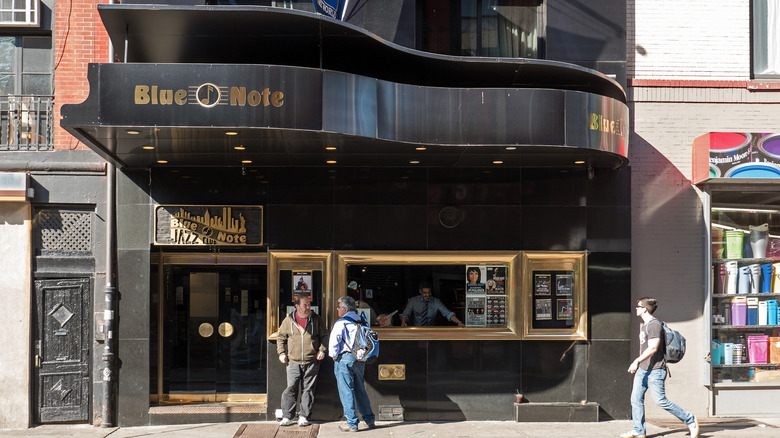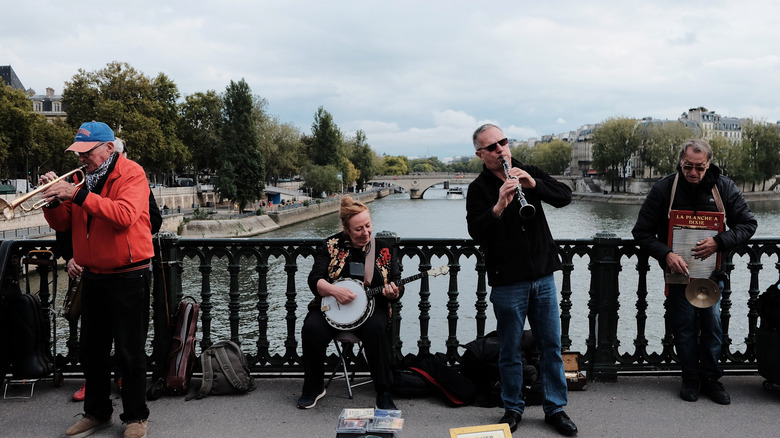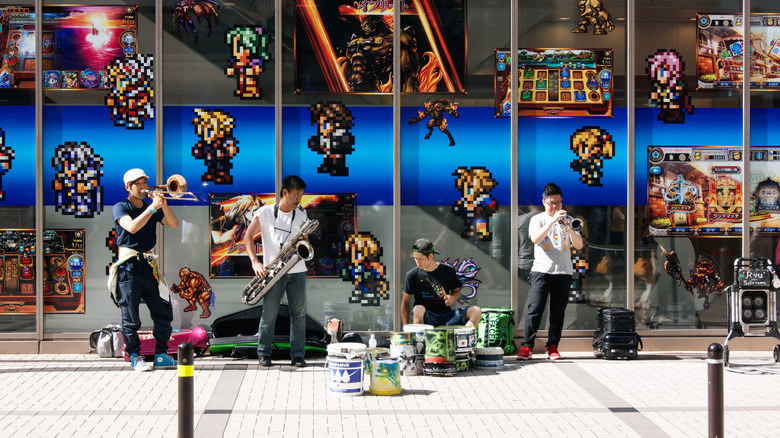The Best Jazz Cities To Experience (Other Than New Orleans), According To Research
Widely acknowledged as the birthplace of jazz, it's no surprise that New Orleans has a special place in the heart of any jazz lover. The Big Easy is regarded by many to be "the world's number one music destination" and is part of the Americana Music Triangle, alongside Memphis and Nashville. There are plenty more storied jazz cities to explore, however, whether you're taking a musical train journey that starts in Chicago or flying to discover new frontiers in experimental jazz in Eastern Europe.
To narrow it down, we looked for cities that boast a vibrant live music scene, a strong connection to jazz history, and a community that supports both established musicians and rising stars. Factors like the number of jazz clubs, annual events, local conservatories, and overall cultural appreciation of the genre all played a role.
We also consulted the writings of experts like Sylvia Brooks, a jazz vocalist and songwriter, who has a list of favorite places across the world to discover new sounds. "From New Orleans to Paris via belonging to the jazz clubs, jazz music has been the vehicle of cultural interchange," she writes on SylviaBrooks.com. "You don't need to possess vast jazz expertise or be a consistently curious visitor. What matters is that you take in the vibrancy and diversity of the jazz world." Together with original research and experts' opinions, we've curated an intriguing and unexpected list of the best jazz cities around the world.
Jazz scenes in Chicago, Kansas City and New York
Jazz may have been born in New Orleans, but it grew up in Chicago. Thanks in large part to legendary jazz trumpet player Louis Armstrong, who was born in New Orleans but rose to music fame in Chicago. The National Trust for Historic Preservation has a walking tour through Chicago's historic jazz venues. Stroll past the Savoy Ballroom, where Louis Armstrong and Count Basie assembled their legendary big bands. Today, it is called the Harold Washington Cultural Center.
As Chicago was consolidating itself as a jazz center, other Midwest cities like Detroit – home to America's oldest jazz club – and Kansas City were also flourishing under this new style of music. The after-hours jam sessions of Kansas City are where the young saxophonist Charlie Parker developed his revolutionary bebop style. Take a wander through 18th & Vine, the flourishing African-American neighborhood that nurtured the city's jazz scene with legendary venues like the Blue Room. After witnessing these iconic nightlife spots, you'll understand why Kansas City is known as the "Paris of the Plains". There's also plenty here for foodies: Kansas City was Anthony Bourdain's favorite place for barbecue.
Today, New York City reigns as the undisputed capital of jazz. This is the city where great jazz legends made their name, from the Harlem Renaissance of the 1920s Jazz Age to the edgy, avant-garde free jazz of the 1960s. Duke Ellington perfected his big band sound at Harlem's Cotton Club, and Billie Holiday sang her iconic rendition of "Strange Fruit" at a venue called Cafe Society. By the 1960s, John Coltrane, Thelonius Monk, and Charlie Mingus were among the wealth of musicians playing at experimental venues like the Five Spot. Today, prestigious venues like Birdland and Blue Note still stand, drawing the biggest names in jazz.
Paris, Copenhagen, and Amsterdam are jazz hotspots
America wasn't the only place where jazz took root. After World War I, African-American army musicians introduced jazz to the clubs and cafes of Paris. It caught on quickly, and artists like Josephine Baker and Sidney Bechet enjoyed a high level of respect that was not given to them back home in the U.S. due to their race.
Today, you can wander the streets of Montmartre, where Baker and Bechet dazzled audiences. It's now a hip neighborhood, overflowing with conscious hotels, shops, restaurants, and bakeries, but you can still visit storied venues like The Casino de Paris music hall. For a truly Parisian take on jazz, however, try to snag a weekend seat for the music at La Chope des Puces, a little bar tucked inside one of the world's largest antique markets, the Saint-Ouen flea market. This is where the legendary guitarist Django Rhinehardt perfected "jazz manouche," his jangling, upbeat take on the genre, combining it with traditional Roma folk songs.
From Paris, jazz spread to other European cities and capitals. That influence is evident in Copenhagen's Jazzhus Montmartre. Established in 1959, this intimate venue hosted jazz greats Miles Davis and Sonny Rollins, among others, establishing Jazzhus Montmartre as Scandinavia's jazz epicenter. Davis, in particular, toured the Danish capital multiple times, evolving the genre each time with groundbreaking concerts in 1960 with jazz giant John Coltrane, then in 1969 with his star-studded second quintet. Other venues in Europe began to experiment with avant-garde jazz. Amsterdam's Bimhuis started as a groundbreaking venue for the genre in the 1970s. Its striking glass and steel construction is reflected in Amsterdam's famous waterways. The best way to catch Amsterdam's new generation of jazz is to stop by Bimhuis's famous Tuesday Jam Session, a showcase of young talent that's free to enter.
Experience jazz in Havana, Tokyo, and Jakarta
As a genre of music, jazz is infinitely adaptable. The musicians of 1950s Havana, Cuba, wove the polyrhythms of Afro-Cuban folk music into jazz improvisations, a sound made famous by the Buena Vista Social Club. Few of Havana's historic jazz venues have survived, including the private members' club in the Buenavista neighborhood where many musicians used to play. But there are places in modern Havana that have begun to rekindle that spirit. Though touristy, there is something undeniably engaging about Legendarios del Guajirito, a nightly, cabaret-style show with world-class musicians performing Buena Vista favorites in Old Havana. For something smaller and more intimate, La Zorra y El Cuervo has the feel of a speakeasy. To get inside, you'll need to step into a red phone booth.
The appreciation of jazz as an art form has taken root in other far-flung places as well. The Japanese capital of Tokyo is considered by some to be the new jazz capital of the world, with hundreds of jazz clubs, large and small. It doesn't even have to be live music. The city's famous jazz-kissaten, for example, are cafes and bars dedicated to the listening of jazz records. Then there are the new frontiers in jazz. Jakarta, the capital of Indonesia, has established itself as an unexpected hub for the genre. Its Java Jazz Festival is one of the world's biggest celebrations of jazz, a three-day event with 11 stages.
For jazz musicians like Sylvia Brooks, discovering new places through music is a journey of its own. "Allow the music to take you through a lively adventure, jazz-inspired from all over the world. It will leave a sense of magic in all corners of Earth," she writes on SylviaBrooks.com. "There is no need to steer, but let the music be the best guide of this remarkable cultural richness and the artistic diversity that are part of Jazz."



